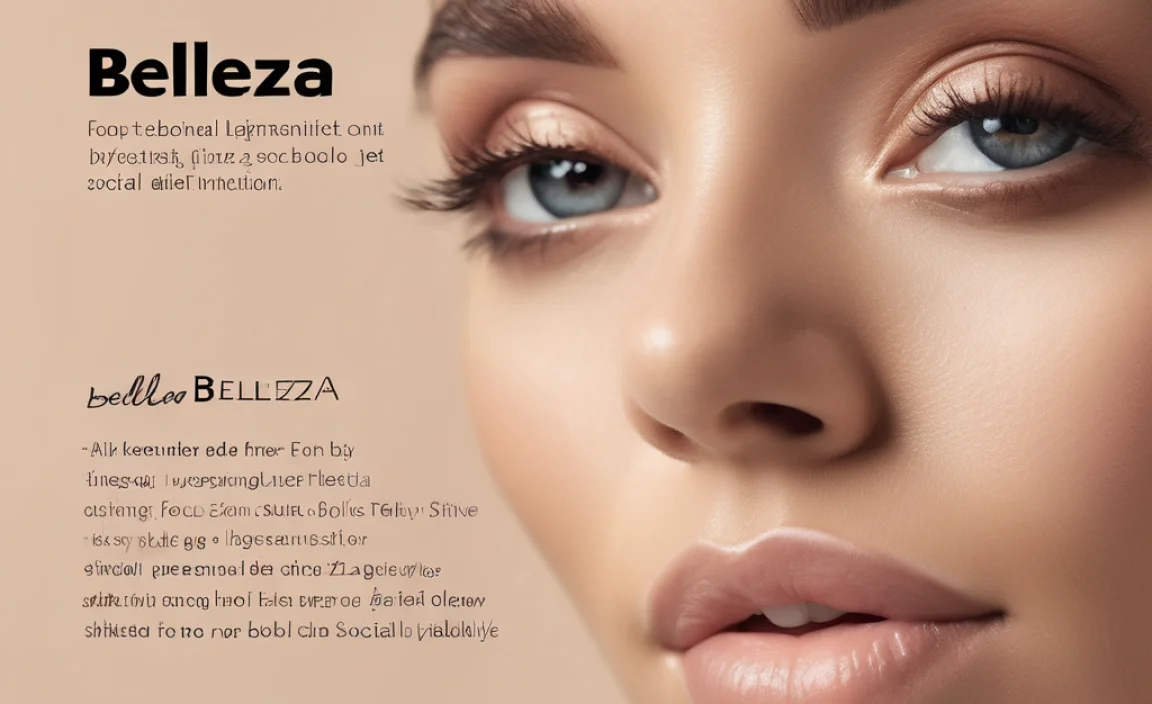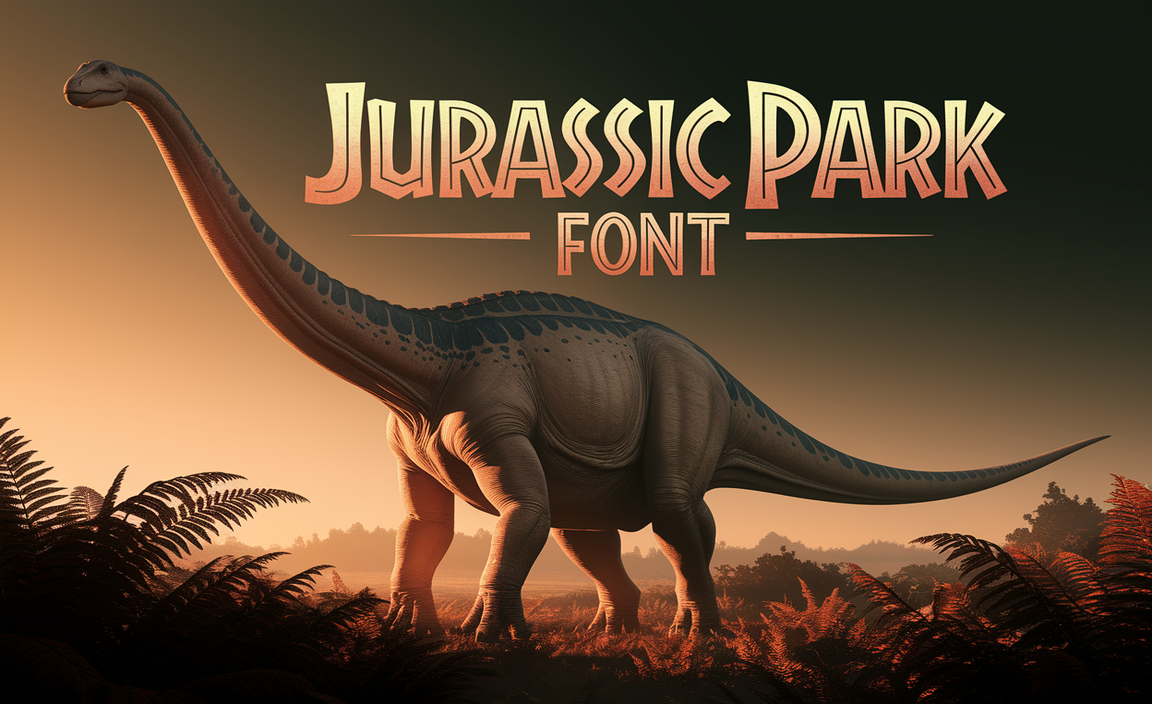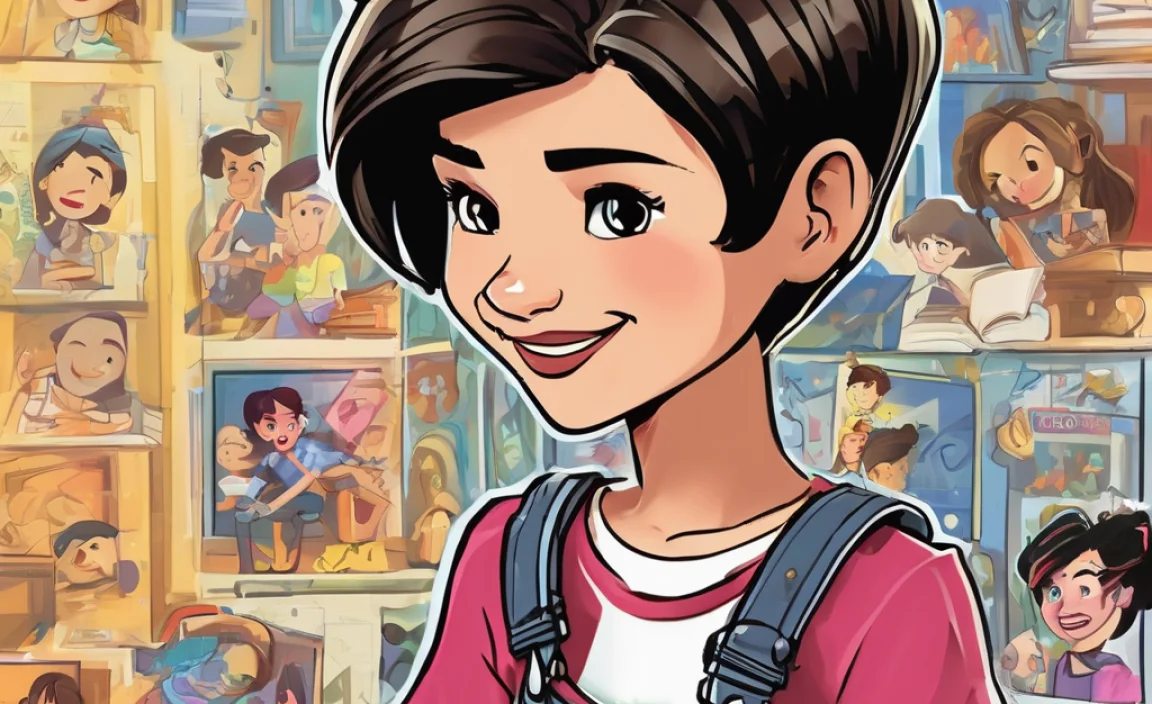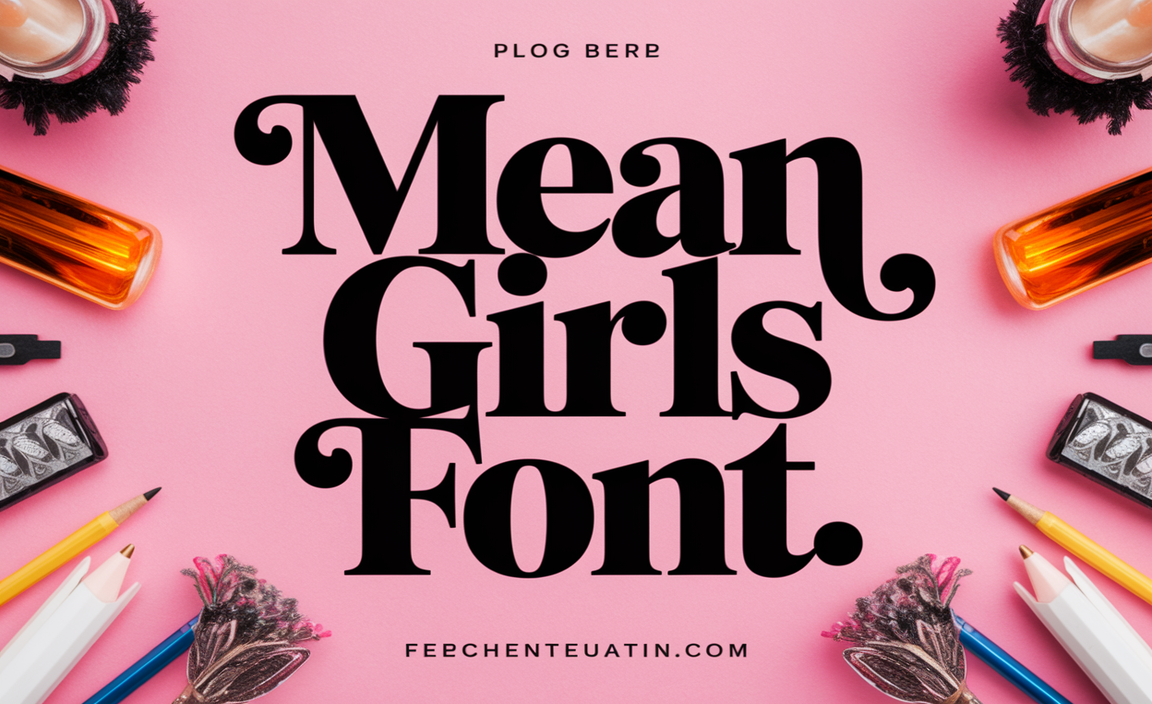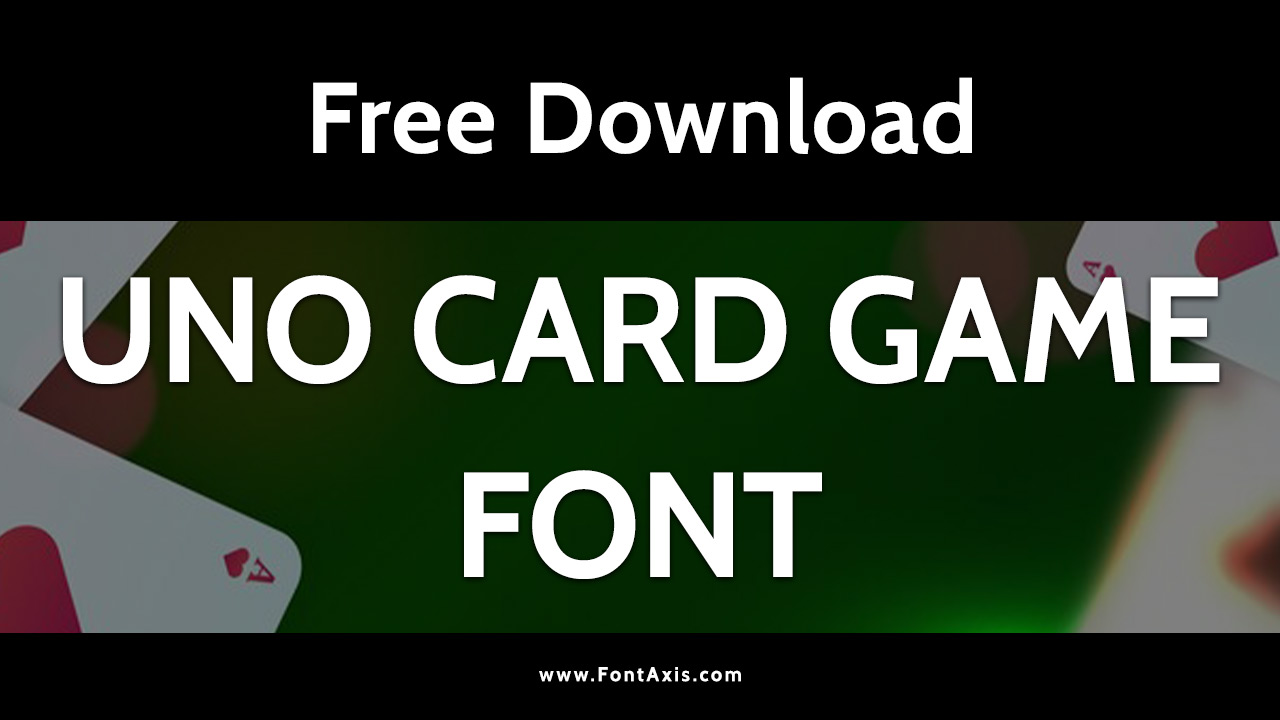Choosing the right font is crucial for conveying your message effectively. When advocating against racism, the font you select amplifies your words. A clear, legible font ensures your message of equality and inclusion is understood by everyone, leaving no room for misinterpretation.
Hey design enthusiasts! Linda Bennett here from FontAxis. Ever felt a jolt of frustration when a great design just doesn’t feel right because of the font choice? I get it! Sometimes powerful messages get lost in fuzzy typography.
If you’re passionate about making a stand against racism and want your visuals to scream solidarity, not confusion, you’ve come to the right place. We’re diving deep into how font selection can be a powerful tool for inclusivity. Let’s explore how to pick fonts that truly champion equality. Get ready to make your design speak volumes for a better world!
The Power of Typography in Social Justice Campaigns
Typography isn’t just about making words look pretty; it’s a silent communicator. It influences how we feel, how we understand, and what we remember. In the context of anti-racism, the font acts as a visual ambassador for your message. A well-chosen font can foster a sense of trust, clarity, and urgency, making your advocacy more impactful.
Conversely, a poorly chosen font can detract from your message, making it appear less serious, less accessible, or even unintentionally exclusionary. Think about it: would a bold, clear message on equality be best served by a flimsy, hard-to-read script font, or a strong, universally understood sans-serif?
This is where the concept of a “No Room for Racism Font” truly shines. It’s not about a single font named “No Room for Racism,” but rather about the principles of design that support messages of inclusivity and anti-racism. It’s about selecting typefaces that are accessible, legible, and convey a sense of seriousness and purpose. Our goal is to make sure your visual advocacy is as strong and clear as your spoken words.
What Makes a Font “No Room for Racism” Essential?
So, what are the essential qualities of a font that perfectly complements an anti-racism stance? It boils down to a few key design characteristics that enhance readability and project a clear, unwavering message. These aren’t just abstract design theories; they are practical choices that make a real difference in how your message is received.
1. Legibility and Readability: The Foundation
This is non-negotiable. For a message of unity and equality to reach the widest audience, it must be easily readable by everyone, regardless of their visual abilities or the context in which they encounter your design. This includes people reading on different screens, in varying light conditions, or those with mild visual impairments.
- Clear Letterforms: Each letter should be distinct and easily distinguishable from others. Avoid fonts with overly stylized or confusing shapes that can be mistaken for other letters (e.g., an ‘i’ looking like an ‘l’, or a ‘0’ looking like an ‘O’).
- Adequate Spacing: Both the space between letters (kerning) and between words (tracking) are vital. Too little space makes text feel cramped and hard to read; too much can disrupt the flow.
- X-Height: This is the height of lowercase letters like ‘x’. A larger x-height generally improves readability, especially at smaller sizes, as it makes the main body of the letter more prominent.
- Open Counters: The ‘counters’ are the enclosed or partially enclosed negative space in letters like ‘o’, ‘p’, ‘d’, ‘a’, ‘e’. Fonts with open counters are typically easier to read, especially at small sizes.
2. Clarity and Simplicity
Anti-racism messages need to be direct and unambiguous. The font should not add any visual noise or complexity that could distract from or dilute the core message of equality and justice. Simple, unfussy designs tend to convey a sense of directness and sincerity.
- Absence of Decorative Flourishes: While decorative fonts have their place, they are generally not suitable for impactful, serious social justice messaging. Overly ornate or whimsical elements can undermine the gravity of the issue.
- Straightforward Design: Fonts with clean lines and predictable forms are best. They communicate efficiency and purpose.
3. Universality and Accessibility
A “No Room for Racism Font” should ideally be a font that feels neutral and universally understood, not tied to specific cultural aesthetics that might alienate some audiences. Accessibility also means considering broader usability, which often aligns with common and well-supported typefaces.
- Wide Character Support: The font should support a wide range of characters, including accents and symbols needed for global communication, if applicable.
- Availability: Many excellent, accessible fonts are available for free or at a low cost, making them practical for widespread use in campaigns.
4. Tone and Seriousness
The font needs to convey the appropriate tone – one of seriousness, determination, and unwavering commitment to the cause. It should not feel lighthearted, frivolous, or informal, as this can trivialize the fight against racism.
- Strong Presence: Fonts that have a solid, stable feel tend to project strength and conviction.
- Lack of “Personality Clutter”: While some personality is good, fonts that are too quirky or have strong, inherent stylistic biases might not be the best choice for a message aimed at universal unity.
Font Categories and Their Suitability for Anti-Racism Messaging
Let’s break down the main font categories and see how they stack up when we’re aiming for that “No Room for Racism” impact. Understanding these categories will help you make informed choices.
Serif Fonts
Serif fonts have small decorative strokes (serifs) at the end of their main strokes. Think of classic books and newspapers. While they can convey tradition, authority, and sophistication, some can appear dated or overly formal, which might not always align with a modern, urgent call for change.
- Pros for Anti-Racism: Can lend an air of credibility and tradition. Some modern serifs offer excellent readability.
- Cons for Anti-Racism: Can sometimes feel old-fashioned or less direct than sans-serifs. The serifs themselves can, in certain very decorative styles, reduce legibility at smaller screen sizes.
- Good Examples (with caution):
- Georgia: A highly readable serif designed for screen use, with a friendly and approachable feel.
- Merriweather: A popular open-source serif that balances traditional forms with modern readability.
Sans-Serif Fonts
Sans-serif literally means “without serifs.” These fonts are characterized by clean, straight lines and a generally modern appearance. They are often favored for their clarity and readability, especially on digital screens.
- Pros for Anti-Racism: Excellent legibility, especially on screens. Their clean, straightforward nature conveys directness and modernity. They feel universally accessible and less tied to historical baggage.
- Cons for Anti-Racism: Some very minimalist or geometric sans-serifs can feel cold or impersonal if not handled carefully. Very thin sans-serifs can be hard to read.
- Excellent Examples:
- Open Sans: A humanist sans-serif designed for excellent legibility across print, web, and mobile interfaces. It’s friendly, clear, and highly versatile.
- Lato: A well-balanced sans-serif with a warm yet stable feel, offering great readability.
- Roboto: Developed by Google, it’s designed for readability across all devices and has a slightly mechanical yet approachable structure.
- Arial: A ubiquitous sans-serif that, while sometimes criticized for being generic, is undeniably clear and universally available.
- Helvetica: Famous for its neutrality and clarity, it’s a staple in design for its straightforward, no-nonsense appearance.
Display Fonts
Display fonts are designed for larger sizes, like headlines or posters. They often have distinctive personalities and are meant to grab attention.
- Pros for Anti-Racism: Can be used for powerful, impactful headings to create a strong visual statement.
- Cons for Anti-Racism: Almost never suitable for body text due to readability issues. Their strong personality can sometimes overshadow the message or convey an unintended tone. Many can be highly stylized and lack universal appeal.
- When to Use (with extreme caution): If you need a bold headline font for a poster campaign, choose one that is still quite legible and doesn’t lean into aggressive or overly stylized territory. Think bold, blocky sans-serifs rather than elaborate scripts or distressed typefaces.
Script Fonts
Script fonts mimic handwriting or calligraphy. They can evoke elegance, playfulness, or a personal touch.
- Pros for Anti-Racism: Generally unsuitable. Their intention is almost always decorative or highly personal, which clashes with clear, unified advocacy.
- Cons for Anti-Racism: Poor readability, especially at small sizes or on screens. Can feel informal, unprofessional, or overly sentimental, undermining the seriousness of the anti-racism message. Can also be inaccessible to those with dyslexia or other reading difficulties.
The Case for Sans-Serif: Why They Often Win
When aiming for a “No Room for Racism Font,” sans-serifs often emerge as the strongest contenders. Their inherent simplicity, clarity, and excellent digital readability make them ideal for conveying critical messages that need to be understood by everyone, everywhere.
Think about the websites of major human rights organizations, the text on protest signs, or informational graphics about diversity. You’ll frequently see clean, bold sans-serif fonts. They don’t distract; they support. They don’t obscure; they clarify. This neutrality allows your message to take center stage, with the typography acting as a reliable, unobtrusive messenger.
For instance, fonts like Open Sans and Lato from Google Fonts are incredibly popular not just because they are free, but because they balance aesthetic appeal with exceptional legibility. They offer a friendly yet professional tone that is welcoming and authoritative without being overbearing.
Practical Steps to Choosing Your “No Room for Racism” Font
Ready to put this knowledge into action? Here’s a straightforward guide to picking the perfect font for your anti-racism designs.
- Define Your Primary Message: What is the core idea you want to communicate? Is it unity, protest, education, or solidarity? Your message’s exact nature can subtly influence your font choice. A message of fierce protest might call for a bolder weight than one of gentle inclusion.
- Consider Your Audience and Medium: Who are you trying to reach? Where will your design be seen?
- Digital (websites, social media): Prioritize fonts designed for screens. Sans-serifs are usually the best bet. Ensure they load quickly and render clearly on all devices.
- Print (posters, flyers, t-shirts): You have a bit more flexibility, but readability from a distance is key for posters. For t-shirts, ensure the font is legible when printed due to fabric texture.
- Prioritize Legibility Above All Else: This cannot be stressed enough. Test your chosen font at various sizes. Can you easily read it as a small caption on an Instagram post and as a large headline on a poster?
- Aim for Simplicity and Clarity: Avoid fonts with excessive flourishes, thin strokes, or complex forms. The goal is to make your words easy to understand, not to showcase fancy typography.
- Choose a Font with Multiple Weights: Most good, versatile fonts come with different weights (Light, Regular, Medium, Bold, Black). This allows you to create hierarchy in your design – for example, using a bold weight for a strong statement and a regular weight for supporting text – all while maintaining a consistent typographic voice.
- Test for Accessibility: If possible, get feedback from a diverse group of people. Ask them if the text is easy to read. This is a step that truly embodies the spirit of inclusivity.
- Examples of Great “No Room for Racism” Fonts:
- Open Sans: Friendly, readable, and versatile.
- Lato: Warm yet strong, excellent for both headlines and body text.
- Montserrat: Geometric sans-serif with a strong, modern vibe.
- Source Sans Pro: Adobe’s open-source sans-serif, known for its versatility and clarity.
- Inter: A newer, highly functional font designed for user interfaces, prioritizing readability at all sizes.
Font Pairing for Maximum Impact
Often, a strong design uses more than one font. This is called font pairing. When pairing fonts for anti-racism messaging, the key is to maintain clarity and purpose, even when using different styles.
The most effective pairings usually involve a sans-serif font for clarity and impact, often used for headlines or key statements, and potentially another sans-serif or a very clean serif for body text. The goal is contrast without clashing.
Effective Pairing Strategies:
- Headline (Bold Sans-Serif) + Body Text (Regular Sans-Serif): This is a classic and highly effective pairing. The bold headline grabs attention, and the regular weight body text is easy to read for more detailed information.
- Example: Headline in Montserrat Bold, Body Text in Montserrat Regular.
- Headline (Strong Sans-Serif) + Body Text (Clean Serif): Use this sparingly if you want to introduce a touch of classic gravitas to your body text, but ensure the serif is highly readable.
- Example: Headline in Roboto Black, Body Text in Merriweather Regular.
- Using Different Weights of the Same Font: This is the simplest and often safest pairing. It ensures visual harmony while allowing for hierarchy.
- Example: Headline in Open Sans Bold, Body Text in Open Sans Regular.
Font Pairing Pitfalls to Avoid:
- Too Many Fonts: Stick to one or two font families for clarity.
- Conflicting Styles: Avoid pairing a highly decorative script with a stern slab serif, for instance.
- Poor Readability: Never sacrifice readability for the sake of a trendy pairing. If a font looks bad when paired, don’t use it.
A great resource for exploring font pairings and seeing them in action is Fontpair.co. They showcase popular and effective combinations that designers use every day.
Beyond Font Choice: Inclusive Design Principles
While choosing the right font is a significant step, a truly inclusive design goes further. It’s about a holistic approach to making your message accessible and resonant for everyone.
Consider these broader principles:
- Color Contrast: Ensure that there is sufficient contrast between text and background colors. This is essential for readability, especially for people with visual impairments. The Web Content Accessibility Guidelines (WCAG) provide specific standards for color contrast, which are highly recommended for any digital project. You can check contrast ratios with online tools like the WebAIM Contrast Checker.
- Sufficient White Space: Allowing ample “white space” (or negative space) around text and design elements prevents clutter and improves focus, making the content easier to digest.
- Imagery: Use diverse and inclusive imagery that represents people of all racial backgrounds in a positive and authentic light.
- Clear Language: Just as with fonts, use clear, simple, and direct language. Avoid jargon or potentially exclusionary slang.
Key Takeaways: A Checklist for Your Design
To make sure your “No Room for Racism” designs hit the mark, keep this quick checklist handy:
| Criterion | “No Room for Racism” Font Qualities | Why It Matters |
|---|---|---|
| Legibility | Clear letterforms, good spacing, open counters, appropriate x-height. | Ensures everyone can read your message easily. |
| Simplicity | Clean, unfussy design; minimal decorative elements. | Keeps focus on the message, avoids distraction. |
| Clarity | Direct, unambiguous letter shapes. | Prevents misinterpretation of your advocacy. |


